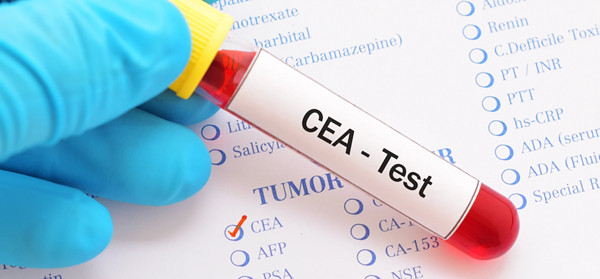In modern medicine, early detection and effective monitoring of cancer are crucial to improving patient survival and quality of life. As an important tumor marker, the rapid detection technology of carcinoembryonic antigen (CEA) has become an indispensable tool in clinical practice. This article will deeply explore the application value, technical principles and future development trends of CEA rapid detection in cancer monitoring and early detection.
1. Biological characteristics and clinical significance of CEA
Carcinoembryonic antigen (CEA) is a glycoprotein with a molecular weight of about 180-200 kDa, originally found in fetal intestinal tissue. Normally, the level of CEA in adult blood is very low (<5 ng/mL). However, when certain malignancies occur, CEA levels increase significantly, making it a valuable tumor marker.
CEA expression increases in many cancers, especially in:
Colorectal cancer (sensitivity is about 50-70%)
Gastric cancer
Pancreatic cancer
Lung cancer
Breast cancer
Medullary thyroid cancer
It is worth noting that elevated CEA levels may also occur in patients with certain benign diseases (such as cirrhosis, inflammatory bowel disease, emphysema) and smokers. Therefore, the interpretation of CEA test results requires a comprehensive analysis of clinical manifestations and other test results.
2.Technical Principles of CEA Rapid Tests
Modern CEA rapid tests are based on immunoassay principles and commonly used methods include:
Enzyme-linked immunosorbent assay (ELISA): a traditional laboratory test with high accuracy and sensitivity, but relatively time-consuming.
Chemiluminescent Immunoassay (CLIA): combines the specificity of an immune response with the high sensitivity of chemiluminescence, and is currently the dominant automated detection technique.
Lateral Flow Immunoassay (LFIA): A rapid assay technique that typically provides results within 15-30 minutes and is suitable for immediate testing (POCT).
Electrochemical Immunosensors: An emerging detection technology that offers the advantages of high sensitivity, rapid response, and ease of use.
The core of the rapid detection technology lies in the use of highly specific monoclonal antibodies to bind to CEA and signal amplification systems (e.g., enzyme-catalyzed, fluorescent labeling, or nanoparticles) to achieve the detection of trace amounts of CEA. Advances in modern technology have increased the detection sensitivity to 0.1ng/mL, greatly improving the detection rate of early-stage cancer.
3. CEA Rapid Tests in Cancer Management
1.Early cancer screening
Although CEA alone is of limited value for cancer screening in asymptomatic populations (because of its lack of specificity), rapid CEA testing can be used as an initial screening tool in high-risk populations (e.g., those with a family history, chronic smokers, or patients with chronic inflammatory bowel disease), where abnormally elevated levels of CEA may indicate the need for more detailed investigations (e.g., colonoscopy or CT scanning).
Studies have shown that regular monitoring of CEA can help detect early colorectal cancer, especially when combined with fecal occult blood testing (FOBT), which significantly improves the efficiency of screening. 2.
2. Cancer Diagnostic Assistance
For patients with suspected cancer, rapid CEA testing can provide important diagnostic information. For example
About 70% of colorectal cancer patients show elevated CEA levels.
About 60% of pancreatic cancer patients test positive for CEA.
Up to 50% of patients with advanced breast cancer show elevated CEA levels
It is worth noting that CEA levels are closely related to tumor stage, and advanced cancer patients usually have significantly higher CEA levels than early stage patients.
3. Treatment Efficacy Monitoring
CEA rapid testing plays a crucial role during cancer treatment:
- Surgical Outcome Assessment: After successful tumor resection, CEA levels should return to normal within 2-4 weeks. Persistently elevated or insufficiently declining CEA levels may indicate residual tumor or metastasis.
- Chemotherapy/Radiotherapy Monitoring: Effective treatment should lead to a gradual decline in CEA levels. The trend of CEA level changes is more meaningful than a single test value.
- Recurrence Warning: Regular CEA monitoring can detect cancer recurrence months before clinical symptoms appear. Research indicates that CEA elevation occurs on average 5-6 months earlier than imaging detection of recurrence.
4. Prognostic Evaluation
Baseline CEA levels serve as independent prognostic factors for various cancers:
- Colorectal cancer patients with preoperative CEA >5 ng/mL have significantly lower 5-year survival rates than those with normal CEA levels
- CEA levels in gastric cancer patients are closely related to tumor invasion depth and lymph node metastasis
- Dynamic changes in CEA levels better reflect disease progression and prognosis than single test values
4. Advantages and Limitations of CEA Rapid Tests
Advantages:
Fast and convenient: Modern rapid test technology provides results in less than 30 minutes, dramatically reducing wait times compared to traditional laboratory tests (typically 24-48 hours).
High sensitivity: Detects changes in CEA at ng/mL and even pg/mL levels.
Dynamic monitoring: Convenient for frequent testing to track disease progression and treatment response.
Cost-effective: Compared with imaging, CEA is more cost-effective and suitable for mass screening and long-term monitoring.
Minimally invasive: Only a small blood sample is required, making it highly acceptable to patients.
Limitations:
Limited specificity: A variety of benign diseases and smoking can lead to slightly elevated CEA levels.
Variable sensitivity: A relatively small percentage of patients with early stage cancer have elevated CEA levels.
Tumor heterogeneity: Some cancers (e.g., some types of lung cancer) do not express CEA.
Standardization issues: Results may vary between methods and laboratories.
5. Conclusion
CEA rapid tests are important tools for cancer surveillance and early detection and play an irreplaceable role in clinical practice. Despite its limitations, its rapid, convenient, and cost-effective features make it an important component of cancer management. With the continuous advancement of detection technology and multidisciplinary integration, the clinical value of CEA will be further enhanced, providing more powerful support for early detection and accurate treatment of cancer.
For healthcare professionals, the rational application of CEA rapid detection technology, combined with patient-specific conditions and other screening methods, can more effectively realize early warning, accurate diagnosis and effective monitoring of cancer, and ultimately improve the prognosis and quality of life of patients. In the future, we anticipate that more innovative technologies will emerge to make early cancer detection more accurate, convenient and universal.
Post time: Jun-10-2025
